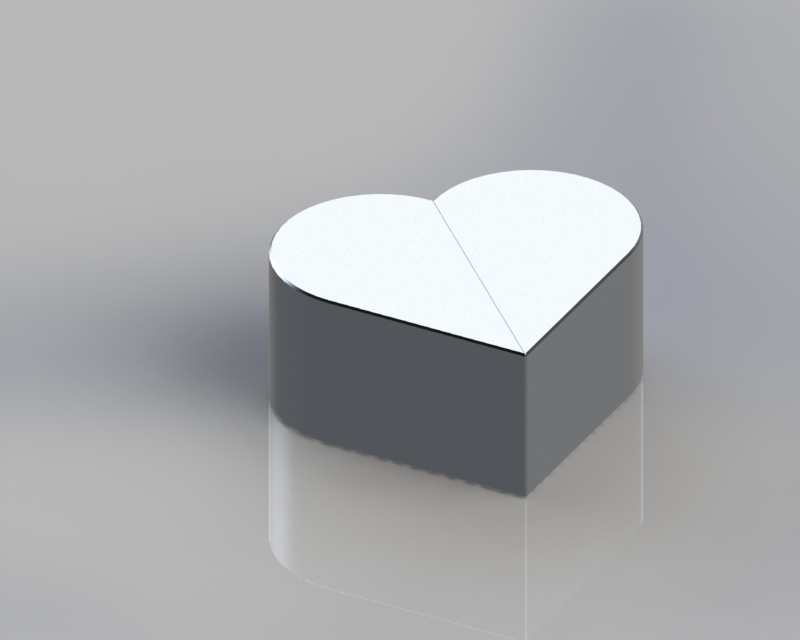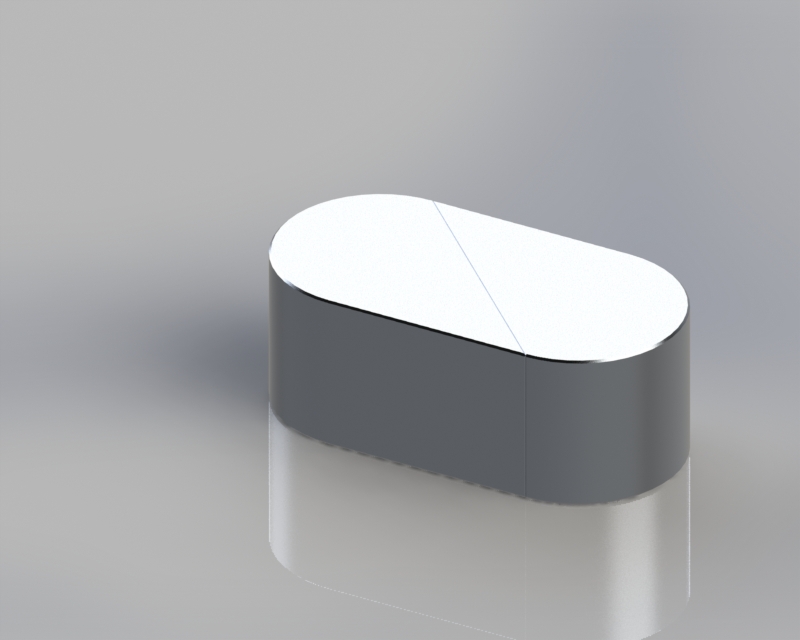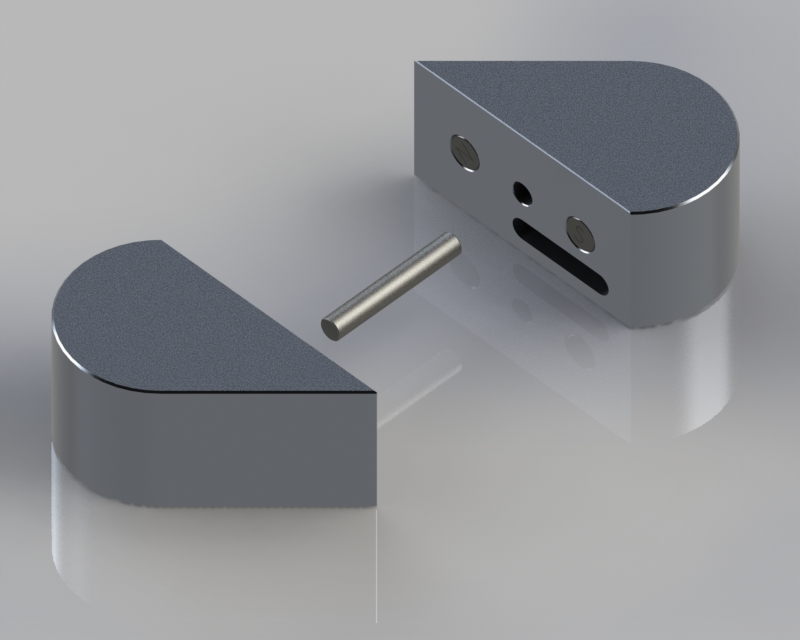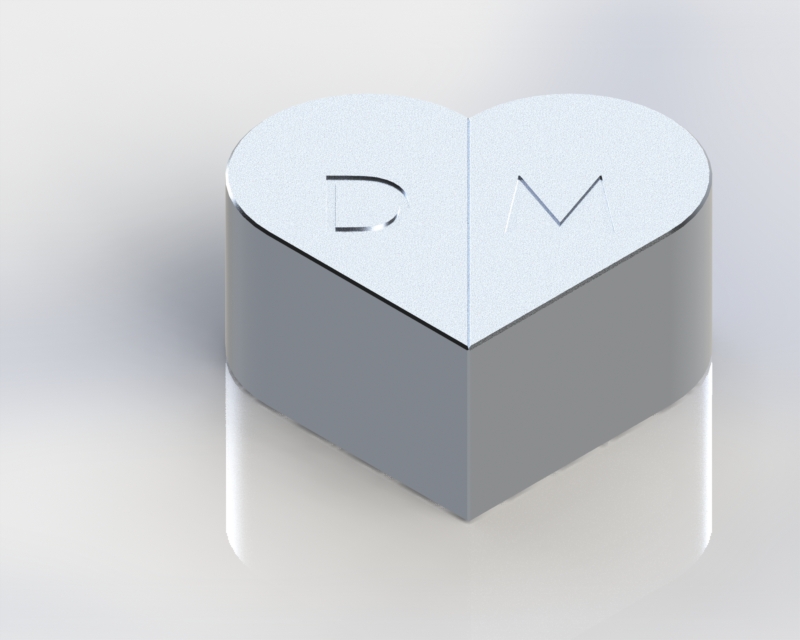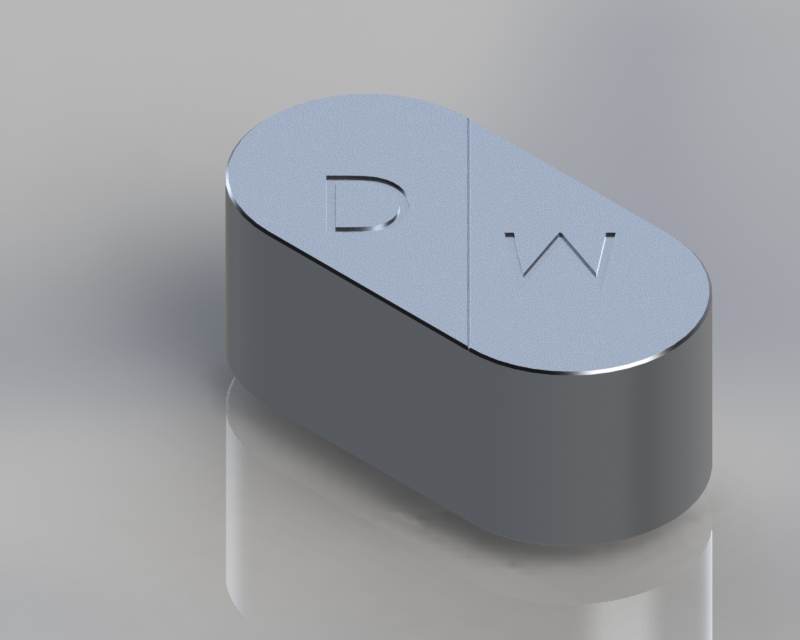This is a present I plan on making for my girlfriend for Valentine's Day. It is a metal heart made of two halves that are connected with a dowel pin and magnets. When the two halves are arranged in the heart configuration, the magnets attract each other and so the configuration is stable. When you twist the halves apart, the halves take the form of an oval. With the magnets' positions switched, the halves repel each other, allowing the user to separate the halves and gain access to the secret pockets inside each half. The secret pockets can be used to small rings, a small note, etc.
I've also decided to take advantage of the fact that our initials form a palindrome. If our initials are engraved a certain way on the two halves, on one side of the heart configuration the letters read "MD" (her initials) and on the other side the initials read "DM" (my initials). When rotated to the oval configuration, both sides are the same but are upside down relative to each other. So it reads "DM" or "MD" depending on how you look at it. I like to think of it as being symbolic of our partnership together.
Manufacturing should be relatively simple. The two halves can be CNC'd out of bar stock. I made the angle on each half 45 deg so that any standard shop gauge block could be used to mount the middle face parallel to the table of the mill for drilling the holes and milling the slot. I plan to use a 1/8" steel dowel pin for the center pivot shaft which can be turned on the lathe. Adhesive backed neodymium magnets will be used for retention. If I decide to do the engraving I will need to make some sort of fixture or jig for a flip milling operation on the reverse side of each half of the heart. Hopefully I can make a simple jig with some locating pins mounted on the mill table.
Note: This design is inspired by an Instructable I remembered seeing a while back. The author of the Instructable credits the design to a scene from the movie "The Illusionist". As you can see, the locket in the movie has 2 additional hinges that allow the locket to swing open in both the oval and heart configuration. The "illusion" is that when you open the locket in one configuration, one person's image appears. But when you open the locket in the other configuration, the other person's image appears. And the baffling thing is, it's hard to understand how twisting the locket from the heart to the oval configuration doesn't rip the picture in half. This is a *greatly* simplified version where there really is no illusion. I will use this design as a starting point and hopefully be able to design a locket that has the full functionality as seen in the movie.





